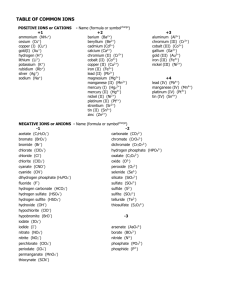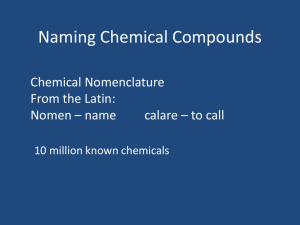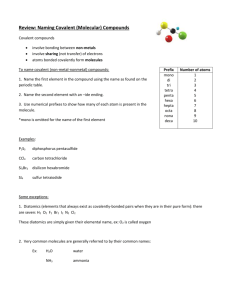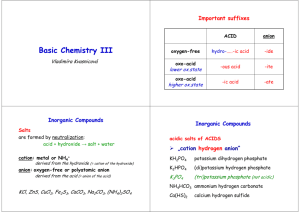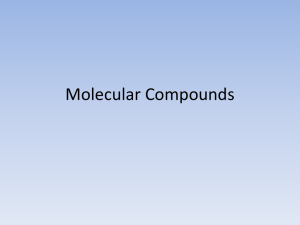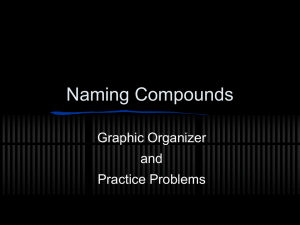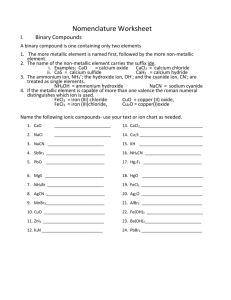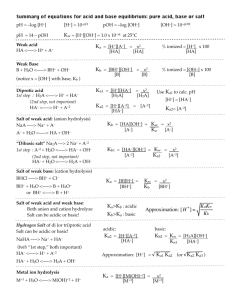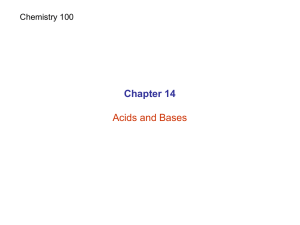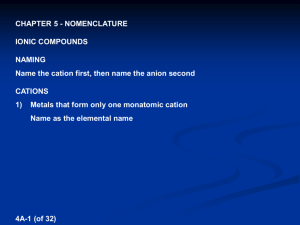Compounds Ionic Compounds with Covalent (Cation
advertisement
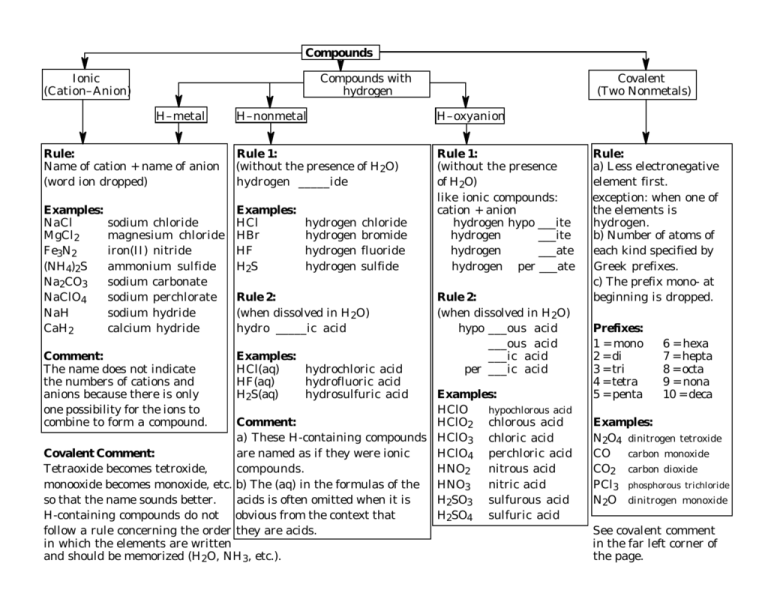
Compounds Ionic (Cation–Anion) Compounds with hydrogen H–metal Covalent (Two Nonmetals) H–nonmetal H–oxyanion Rule: Name of cation + name of anion (word ion dropped) Rule 1: (without the presence of H2O) hydrogen _____ide Examples: NaCl MgCl2 Fe3N2 (NH4)2S Na2CO3 NaClO4 NaH CaH2 Examples: HCl HBr HF H2S Rule 1: (without the presence of H2O) like ionic compounds: cation + anion hydrogen hypo ___ite hydrogen ___ite hydrogen ___ate hydrogen per ___ate sodium chloride magnesium chloride iron(II) nitride ammonium sulfide sodium carbonate sodium perchlorate sodium hydride calcium hydride Comment: The name does not indicate the numbers of cations and anions because there is only one possibility for the ions to combine to form a compound. hydrogen hydrogen hydrogen hydrogen chloride bromide fluoride sulfide Rule 2: (when dissolved in H2O) hydro _____ic acid Examples: HCl(aq) hydrochloric acid HF(aq) hydrofluoric acid H2S(aq) hydrosulfuric acid Rule 2: (when dissolved in H2O) hypo ___ous acid ___ous acid ___ic acid per ___ic acid Examples: HClO hypochlorous acid Comment: HClO2 chlorous acid a) These H-containing compounds HClO3 chloric acid Covalent Comment: are named as if they were ionic HClO4 perchloric acid Tetraoxide becomes tetroxide, compounds. HNO2 nitrous acid monooxide becomes monoxide, etc. b) The (aq) in the formulas of the HNO3 nitric acid so that the name sounds better. acids is often omitted when it is H2SO3 sulfurous acid H-containing compounds do not obvious from the context that H2SO4 sulfuric acid follow a rule concerning the order they are acids. in which the elements are written and should be memorized (H2O, NH3, etc.). Rule: a) Less electronegative element first. exception: when one of the elements is hydrogen. b) Number of atoms of each kind specified by Greek prefixes. c) The prefix mono- at beginning is dropped. Prefixes: 1 = mono 2 = di 3 = tri 4 = tetra 5 = penta 6 = hexa 7 = hepta 8 = octa 9 = nona 10 = deca Examples: N2O4 dinitrogen tetroxide CO carbon monoxide CO2 carbon dioxide PCl3 phosphorous trichloride N2O dinitrogen monoxide See covalent comment in the far left corner of the page.
